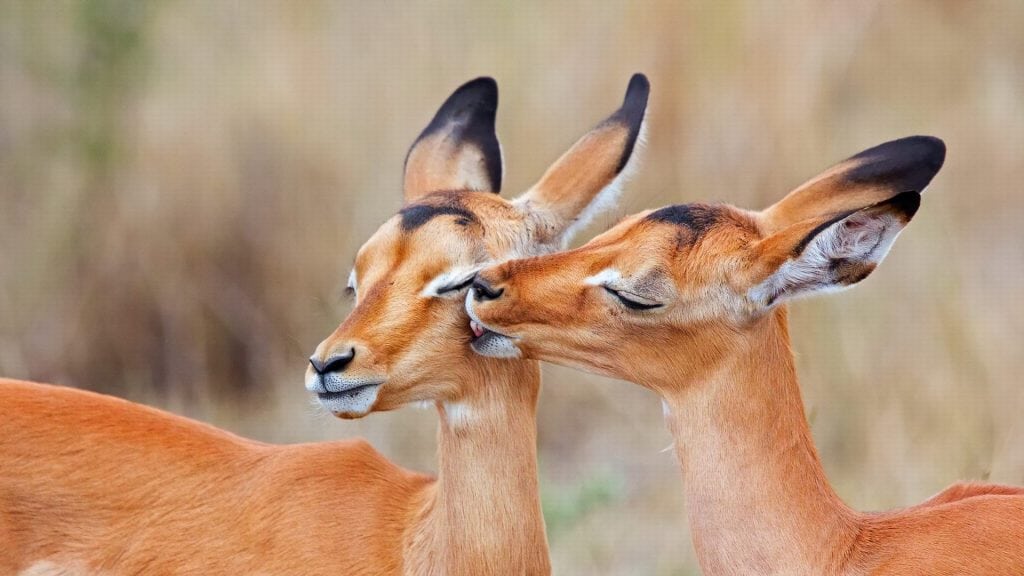Impalas are one of a kind. They’re the only member of the genus Aepyceros, which is included under the Bovidae family (along with buffalo, sheep, goats, and cows, to name a few).
Within the impala species, scientifically known as Aepyceros melampus, there are two subspecies of impalas: the common impala, or Aepyceros melampus melampus, and the black-faced impala, or Aepyceros melampus petersi. These black-faced impalas are considerably rarer and are only found in a small subsection of southern Africa (specifically in Namibia and Angola).
South African biltong is a dried and cured meat often compared to jerky. It’s usually made from beef, but some purveyors still produce biltong made from game meats. Potential animals on the biltong menu include impalas, ostriches, and wildebeests.

Running as fast as possible isn’t the best move for impalas hoping to evade a predator, according to a study published in Nature in February 2018. Cheetahs, for example, have 20 percent more muscle power than impalas, and they can accelerate 37 percent faster.
And with a top speed around 60 miles per hour (which is considerably faster than an impala’s top speed), a cheetah can easily outstrip an impala in a straightforward race.
The best tactic, researchers say, is to move unpredictably. Animals moving at high speeds are less maneuverable, so impalas can shake off a predator if they change directions rapidly. According to Seeker, lower-speed chases almost always favor prey survival.














